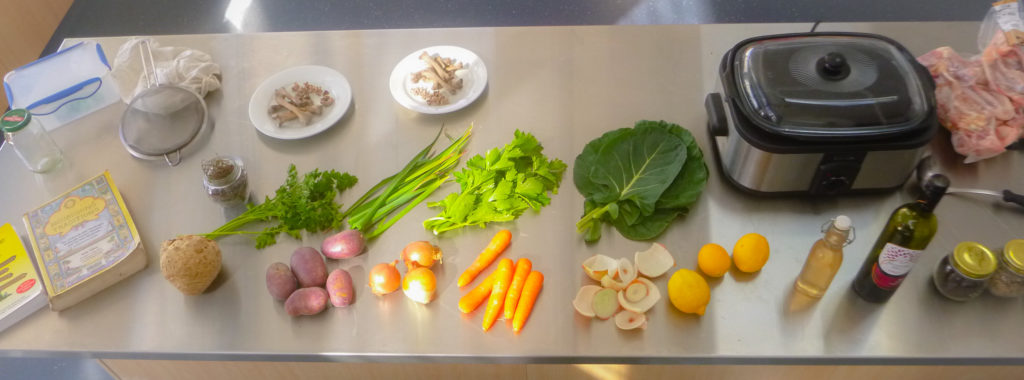
A bubbly Joanna McCluskey from Made of Earth, in Denmark WA, showed a bunch of us how to make bone broth for gut & bone health and kitchen economy in August at the Albany Community Enterprise Development Centre.
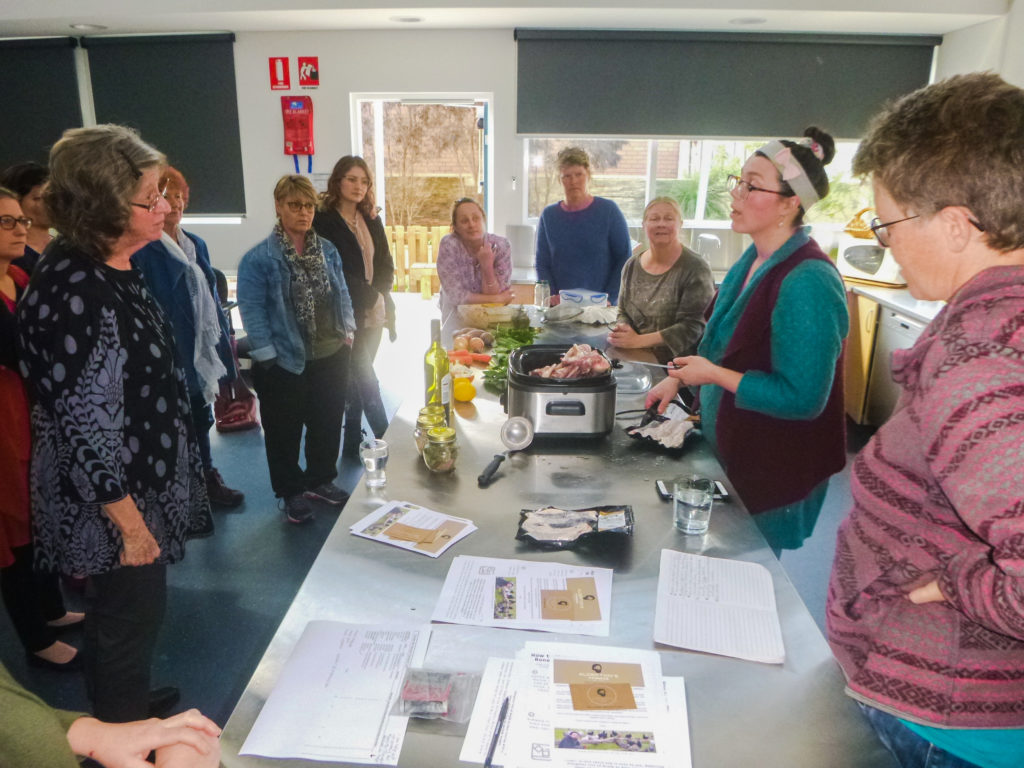
Key learnings were: for maximum gelatin extraction, include some feet or other parts with a lot of cartilage and simmer slowly for 12-24 hours.
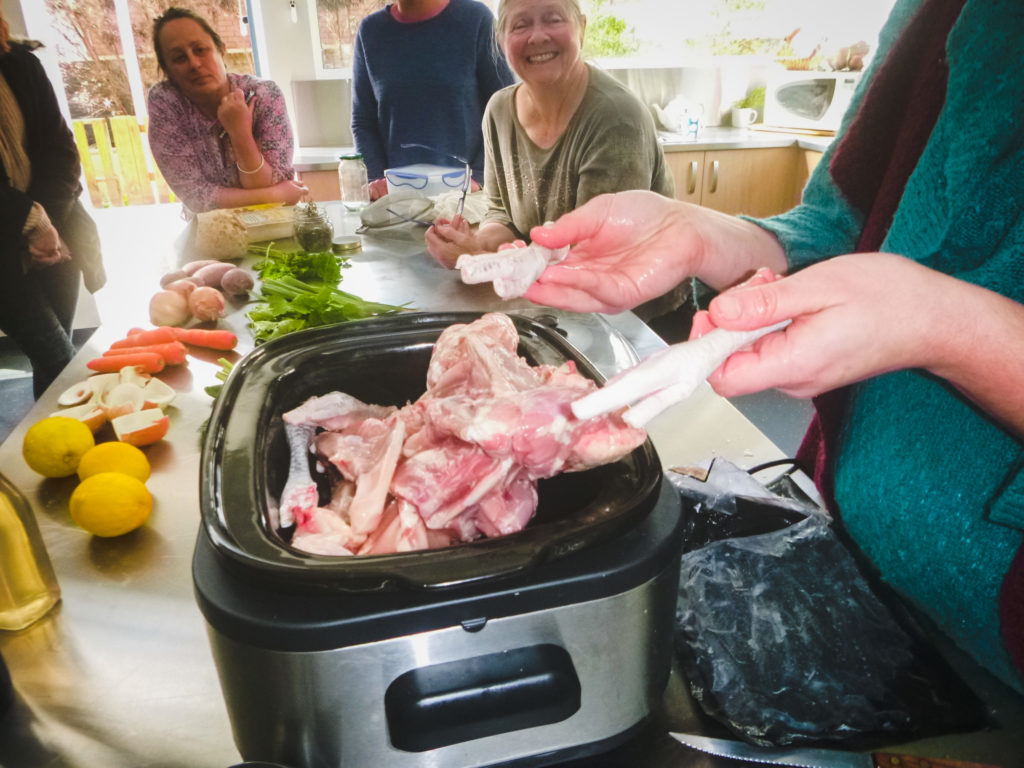
The basic recipe was local bones from grass-fed animals, rainwater and a splash of acid – lemon juice, vinegar or cooking wine. This helps to extract the goodness from the bones. Joanna tends not to add vegetables to her basic broth pot, to keep it unflavoured and versatile. She’ll add them in later or cook them in broth afterwards.
Joanna talked about different methods of cooking broth, including slow cooker, pressure cooker and wood fire. One participant told us about a chicken broth she ate at a relative’s house in Europe that had been on the stove for over twenty years! The slow cooker (or crockpot) is a handy modern alternative.
A roast can be cooked in the oven or crockpot, the meat cut off and used for several meals and the bones saved. The bones can then be cooked again, to make a meaty broth. It doesn’t matter if they’ve been gnawed because the cooking will kill any germs. After this, the now clean bones can be cooked a third time for several days to make a flavourless broth that can even be the base for fruit smoothies! Now that’s something I haven’t tried.
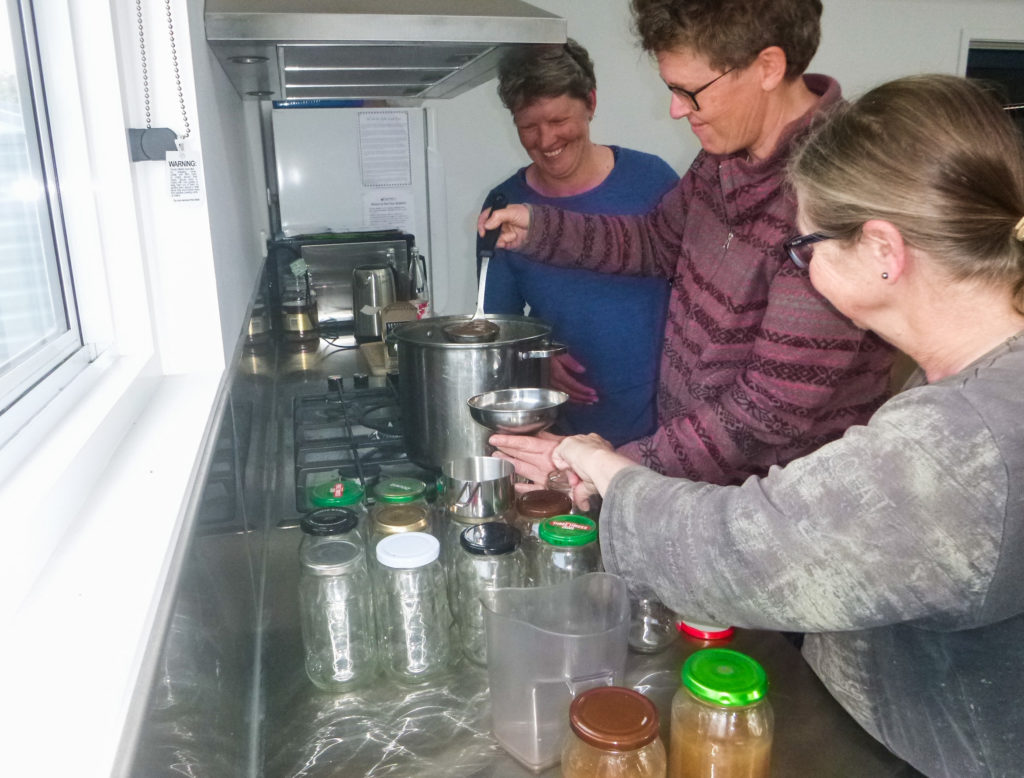
As well as watching how to start a bone broth, workshop participants ladeled out a pre-prepared pot of mixed broth into jars to take home. There was also enough for a taste, with or without a sprinkle of pink salt and turmeric.
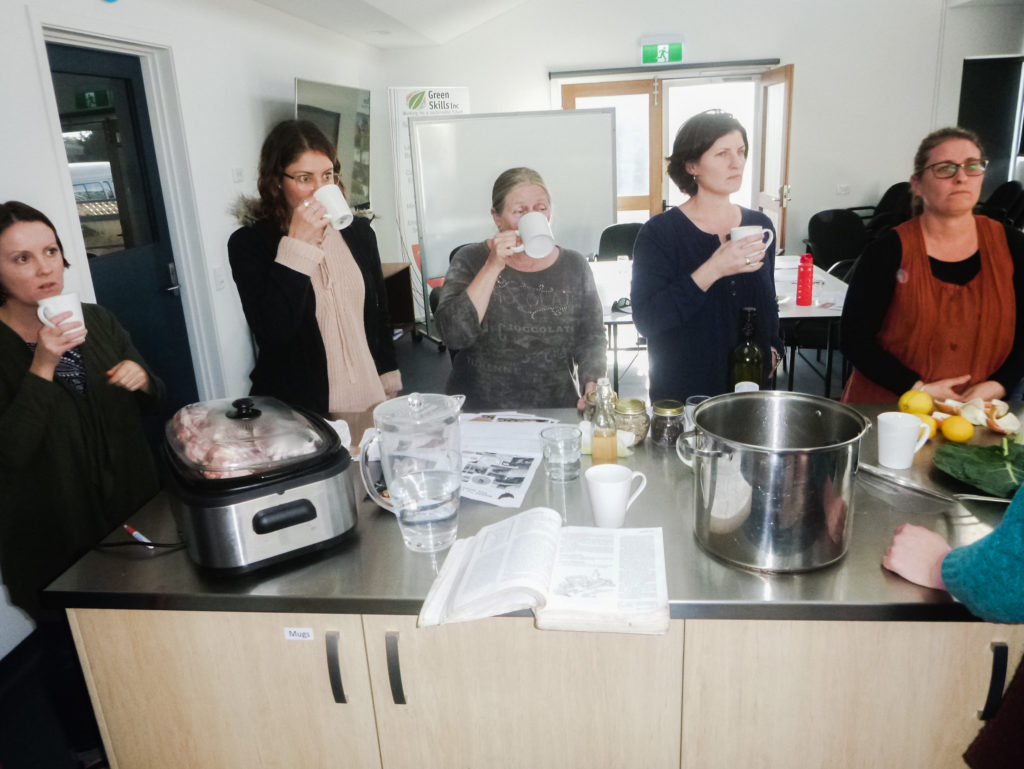
Bone broth can be drunk straight, used as a base for soups, smoothies and sauces, or use the liquid to cook grains and vegies. Season plain broth with miso, eggs, seaweed sprinkles, tumeric, ginger or whatever you desire. Bone broth by the cup is a trendy superfood in some places.
It’s hard to obtain the benefits of bone broth from vegan or vegetarian ingredients; Joanna suggested coral and seaweed is probably the closest thing for minerals, and I would add some (unheated) fermented vegetables for gut health. Some herbs can help to heal the gut lining, like slippery elm powder. If you don’t eat bones, you could try this vegan recipe.
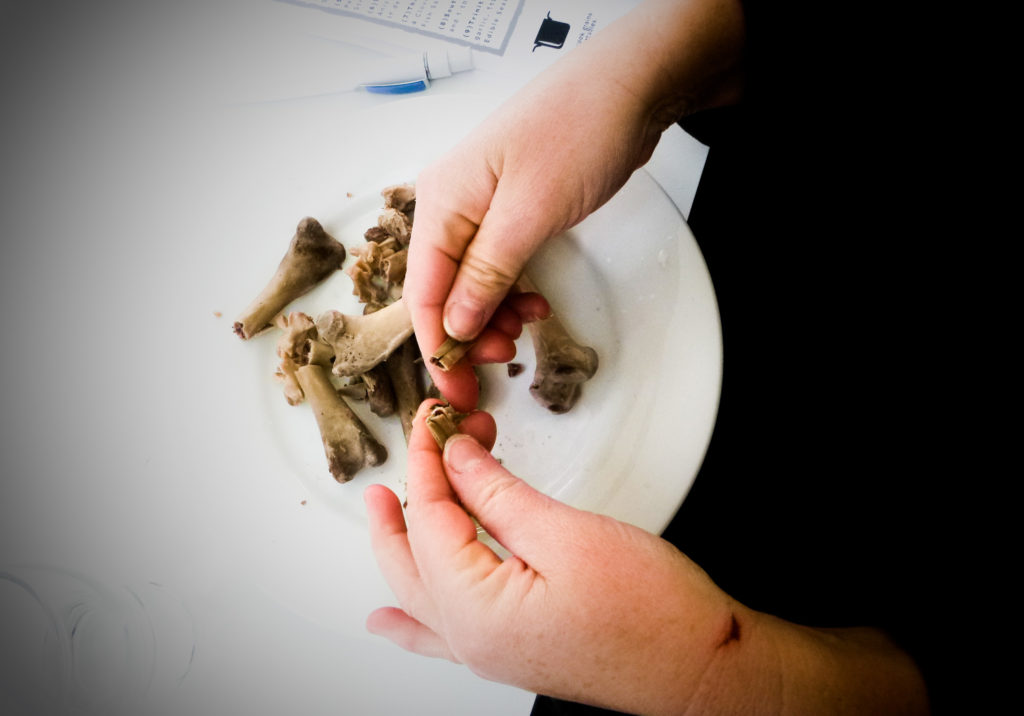
Slow-cooked broth made from responsibly-raised animals has many health benefits, and it means that you can use more of the animal rather than throwing it away. If we are going to eat animals, we should use the whole animal. Bones that have been cooked for this long can be eaten or crumbled into the compost heap or worm farm, which reduces the chance of rats or dogs dragging whole bones out of your compost heap. It’s much cheaper to make your own good broth rather than buy it – it really is a superfood that you can easily make in your own home.

